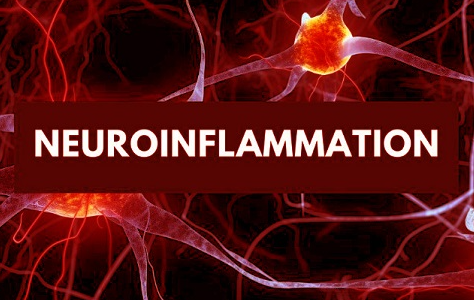Chronic pain conditions can often be confusing to differentiate, especially when their symptoms overlap. Two such conditions are subacromial pain syndrome (SAPS) and fibromyalgia. While both involve significant discomfort, they differ greatly in their causes, symptoms, diagnostic methods, and treatment approaches. Understanding these distinctions is crucial for accurate diagnosis and effective management.
Understanding Subacromial Pain Syndrome (SAPS)
Subacromial pain syndrome (SAPS) refers to a condition characterized by pain in the shoulder, particularly around the subacromial space. This area is located beneath the acromion, a bony projection on the scapula (shoulder blade). SAPS is one of the most common causes of shoulder pain and can significantly impact daily activities.
Causes of SAPS
- Repeated overhead activities leading to shoulder impingement.
- Inflammation of the rotator cuff tendons (tendinitis).
- Subacromial bursitis (inflammation of the bursa beneath the acromion).
- Degenerative changes in the shoulder joint.
Symptoms of SAPS
- Localized shoulder pain, especially during movement.
- Pain when lifting the arm above shoulder level.
- Weakness or stiffness in the shoulder.
- Difficulty with activities like reaching, lifting, or throwing.
Diagnosis of SAPS
SAPS is typically diagnosed through:
- Physical examination to assess pain, range of motion, and impingement signs.
- Imaging tests such as X-rays, ultrasound, or MRI to identify structural abnormalities or inflammation.
Treatment for SAPS
- Non-surgical options: Rest, physical therapy, anti-inflammatory medications, and corticosteroid injections.
- Surgical intervention: Reserved for severe cases where conservative treatments fail, such as arthroscopic decompression or rotator cuff repair.
Understanding Fibromyalgia
Fibromyalgia is a chronic condition that causes widespread musculoskeletal pain accompanied by fatigue, sleep disturbances, and cognitive issues (commonly referred to as “fibro fog”). Unlike SAPS, fibromyalgia is a systemic condition that affects the entire body rather than a localized area.
Causes of Fibromyalgia
- The exact cause is unknown, but potential triggers include:
- Genetic predisposition.
- Physical or emotional trauma.
- Dysregulation of the central nervous system, leading to increased pain sensitivity.
Symptoms of Fibromyalgia
- Widespread pain affecting multiple areas of the body.
- Extreme fatigue and lack of energy.
- Sleep disturbances, including unrefreshing sleep.
- Cognitive difficulties, memory problems, and difficulty concentrating.
- Coexisting conditions like irritable bowel syndrome (IBS) or migraines.
Diagnosis of Fibromyalgia
- No specific diagnostic test exists; diagnosis is based on:
- A history of widespread pain lasting more than three months.
- The presence of other symptoms like fatigue and sleep disturbances.
- Exclusion of other conditions through blood tests and imaging studies.
Treatment for Fibromyalgia
- A combination of:
- Medications such as antidepressants, anticonvulsants, and pain relievers.
- Non-pharmacological approaches like physical therapy, cognitive behavioral therapy (CBT), and stress management techniques.
- Lifestyle changes, including regular exercise and a healthy diet.
Key Differences Between SAPS and Fibromyalgia
| Aspect | Subacromial Pain Syndrome (SAPS) | Fibromyalgia |
|---|---|---|
| Location of Pain | Localized to the shoulder region. | Widespread pain affecting multiple body areas. |
| Cause | Mechanical or structural issues in the shoulder. | Systemic dysfunction, often involving the central nervous system. |
| Symptoms | Shoulder pain, weakness, and limited range of motion. | Pain, fatigue, cognitive issues, and sleep disturbances. |
| Diagnosis | Imaging tests and physical examination. | Symptom history and exclusion of other conditions. |
| Treatment | Focused on relieving shoulder pain and improving mobility. | Holistic approach targeting pain, fatigue, and mental health. |
Why the Distinction Matters
Confusing SAPS with fibromyalgia can lead to improper treatment and prolonged suffering. For instance:
- Treating SAPS with systemic approaches tailored for fibromyalgia may overlook the need for localized interventions, such as physical therapy or injections.
- Assuming widespread pain from fibromyalgia is due to SAPS could lead to unnecessary imaging tests or even surgery.
Conclusion
Both subacromial pain syndrome (SAPS) and fibromyalgia present unique challenges but are fundamentally different conditions. While SAPS is a localized issue related to shoulder mechanics, fibromyalgia is a systemic disorder involving widespread pain and other complex symptoms. Recognizing the differences is essential for accurate diagnosis and tailored treatment, enabling individuals to manage their pain and improve their quality of life effectively. If you suspect either condition, consult a healthcare professional for a thorough evaluation and appropriate management plan.

Click Here to Visit the Store and find Much More….
For More Information Related to Fibromyalgia Visit below sites:
References:
Fibromyalgia Contact Us Directly
Click here to Contact us Directly on Inbox
Official Fibromyalgia Blogs
Click here to Get the latest Chronic illness Updates
Fibromyalgia Stores










